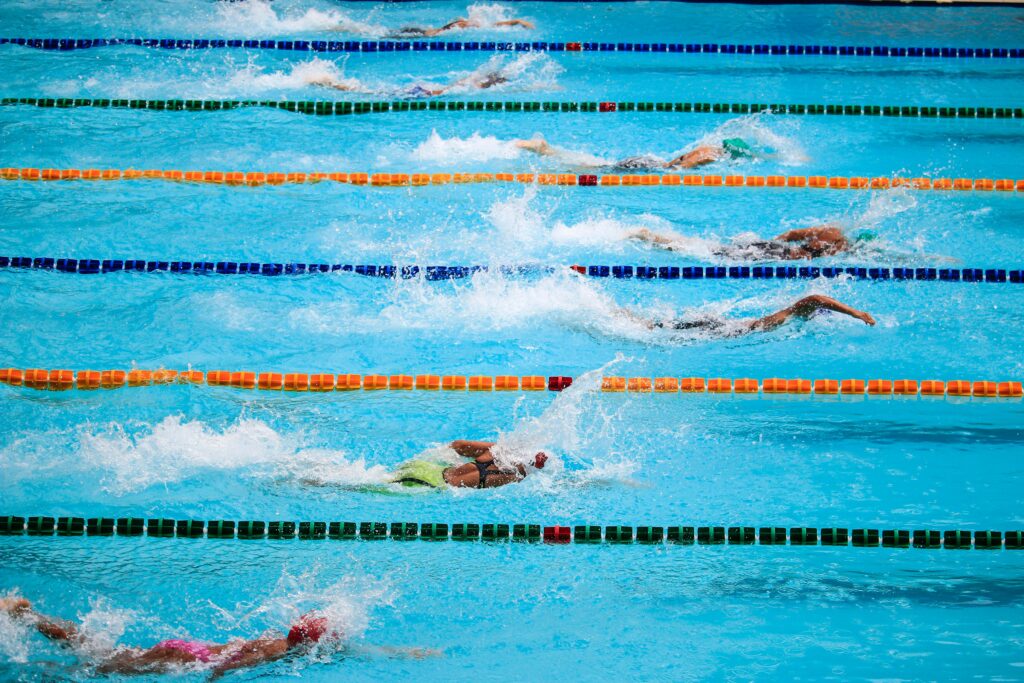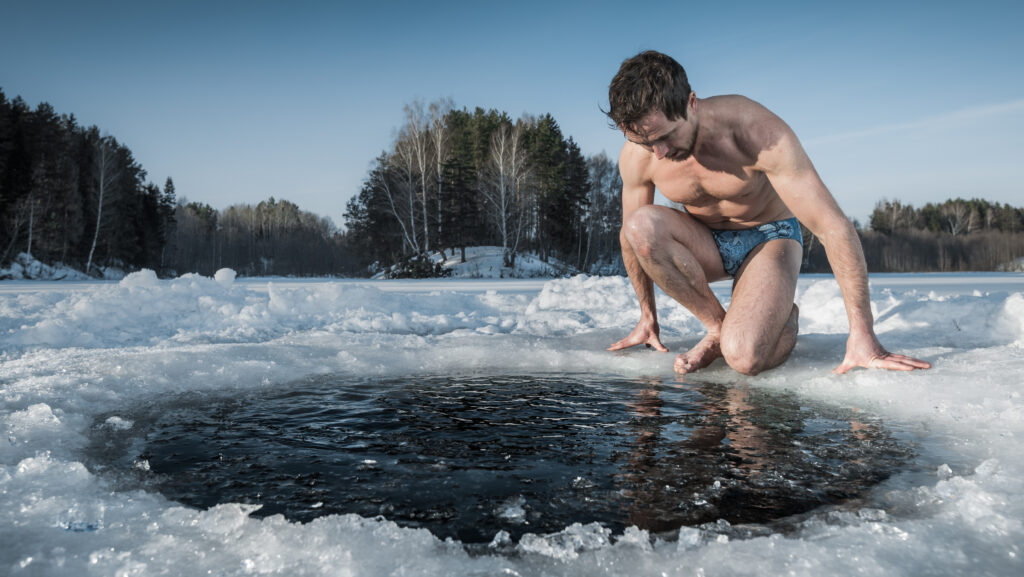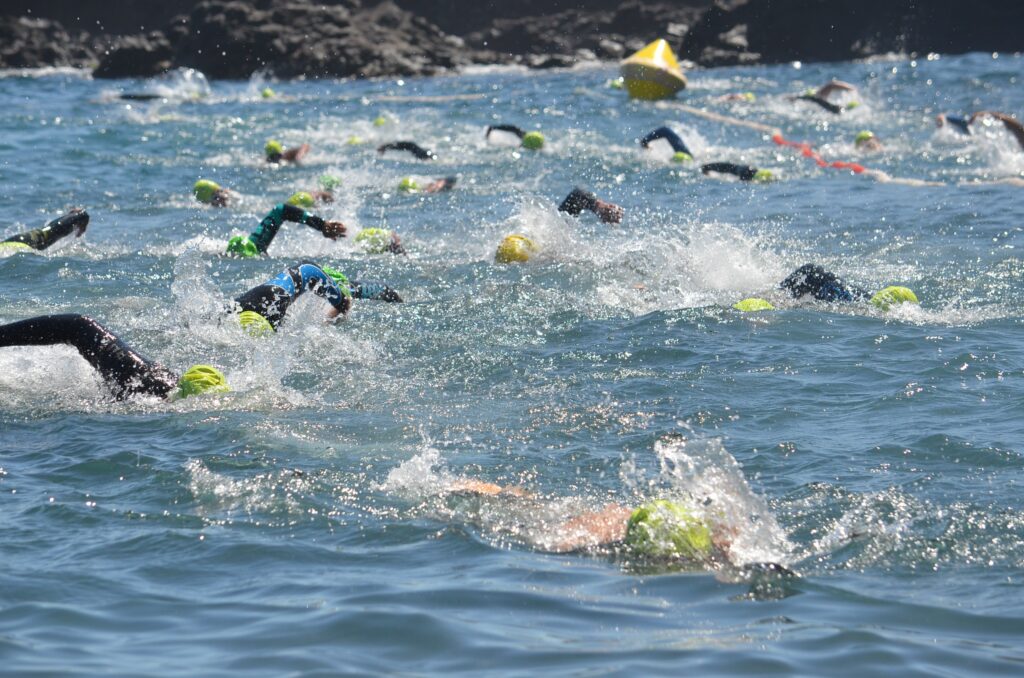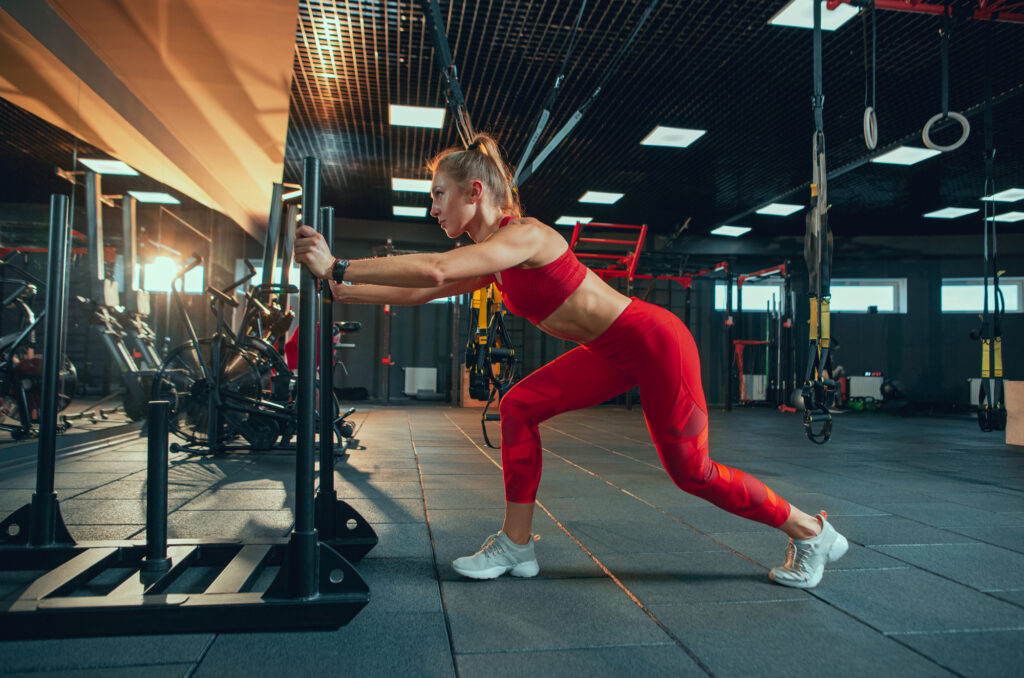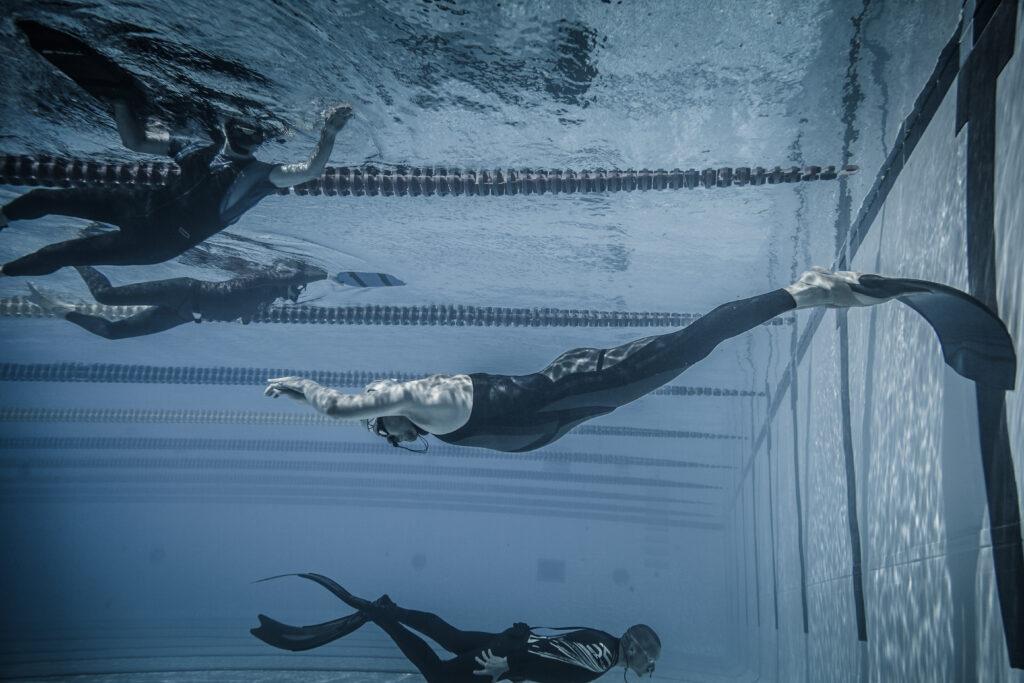Improving your length pacing in longer distance swimming races can be a challenging task, but it is essential to ensure that you finish strong. Proper pacing is crucial in distance swimming, and it requires a combination of great technique and endurance. In this article, we will explore various ways to improve your pacing in long-distance swimming races.
First, we will understand the basics of swimming and the importance of pacing in long-distance events. We will also discuss various training techniques and programs that can help you build endurance and improve your performance. Additionally, we will cover techniques to improve stroke efficiency, manage fatigue, and breathing patterns and their impact. We will also discuss the role of equipment in swimming, the start, turn, and finish, specific challenges in different swimming events, and the role of coaches and personal trainers.
By the end of this article, you will have a better understanding of how to improve your length pacing in longer distance swimming races. Whether you are a beginner or an experienced swimmer, these tips and techniques will help you achieve your goals and improve your performance in the pool.
Key Takeaways
- Proper pacing is crucial in long-distance swimming races, and it requires a combination of great technique and endurance.
- Training techniques and programs, stroke efficiency, managing fatigue, and breathing patterns are essential factors to consider when improving length pacing in swimming.
- The role of coaches and personal trainers is crucial in achieving your goals and improving your performance in the pool.
Understanding the Basics of Swimming
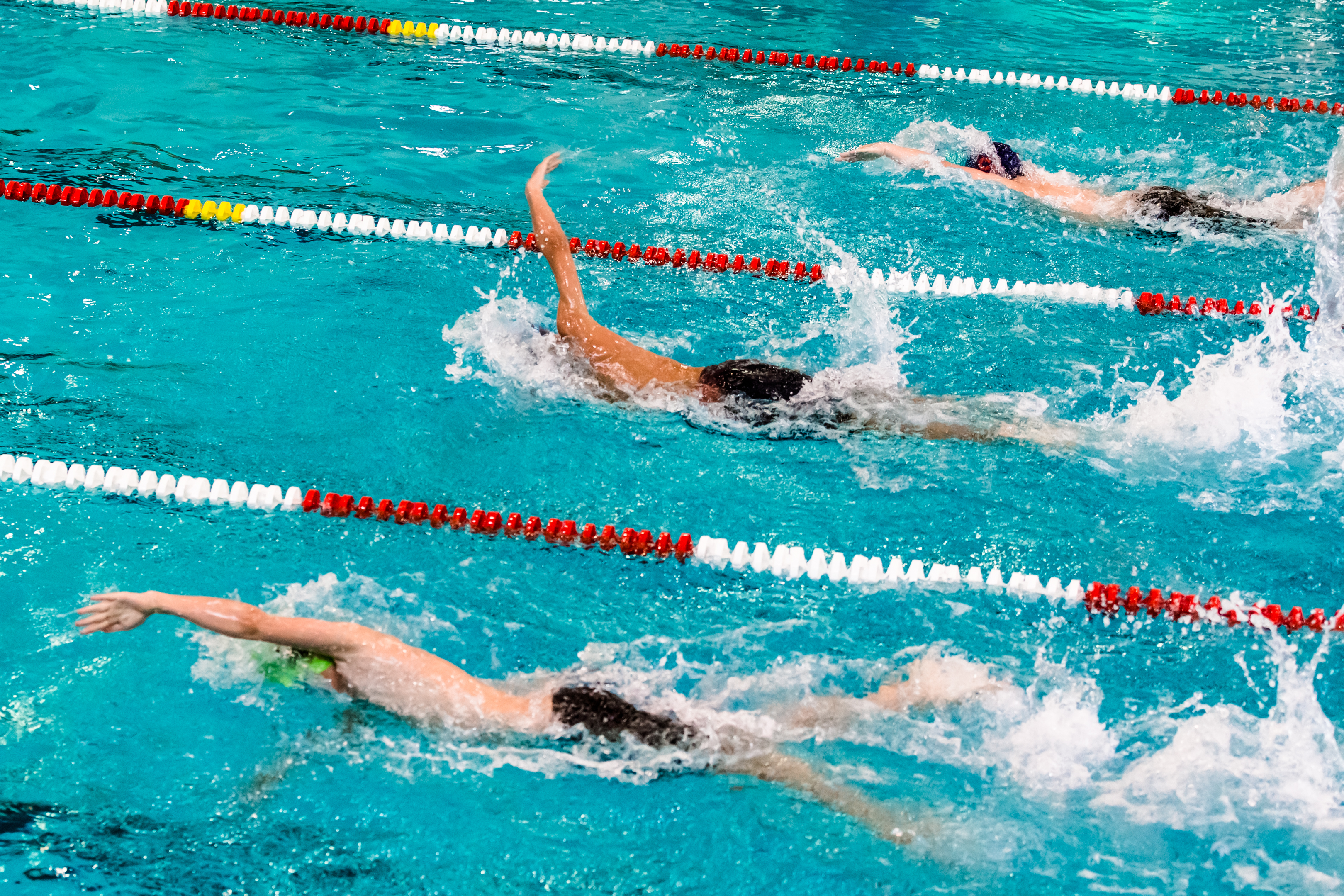
When it comes to improving our length pacing in longer distance swimming races, it’s important to start with the basics of swimming. Proper technique and body positioning can make all the difference in our ability to swim long distances efficiently and with less fatigue.
One of the most important aspects of swimming technique is the freestyle stroke. This is the most commonly used stroke in swimming and is the most efficient for longer distances. It’s important to focus on proper stroke technique, including arm position, hand entry, and rotation.
Body position is another key factor in efficient swimming. We want to maintain a horizontal position in the water with our hips and legs close to the surface. This helps to reduce drag and allows us to move through the water more easily.
Kicking is also an important aspect of swimming technique. While it may seem like kicking harder would make us swim faster, it’s actually more important to focus on a smooth and consistent kick. This helps to maintain our body position and reduces energy expenditure.
In addition to these basics, there are many other techniques and strategies that can help us improve our length pacing in longer distance swimming races. By focusing on proper technique and body positioning, we can swim more efficiently and with less fatigue, allowing us to maintain a steady pace throughout the race.
Importance of Pacing in Long Distance Swimming
Pacing is a crucial aspect of long distance swimming. It refers to the speed at which you swim and how you distribute your energy throughout the race. A good pacing strategy can help you maintain your speed and finish the race strong, while a poor one can lead to exhaustion and a slower finish time.
When it comes to pacing in long distance swimming, there are a few different strategies you can use. One common approach is to maintain an even pace throughout the race. This means swimming at a consistent speed from start to finish. Another strategy is negative splitting, which involves swimming the second half of the race faster than the first half. This can be an effective way to conserve energy early on and finish strong.
Regardless of the strategy you choose, pacing is important because it helps you avoid burning out too quickly. Swimming too fast at the beginning of the race can lead to fatigue and make it difficult to maintain your speed later on. On the other hand, starting too slow can put you at a disadvantage and make it difficult to catch up later.
In addition to helping you maintain your speed, pacing can also help you conserve energy. By swimming at a steady pace, you can avoid wasting energy on unnecessary movements or strokes. This can help you stay efficient and maintain your speed for longer periods of time.
Overall, pacing is an essential component of long distance swimming. By developing a solid pacing strategy and sticking to it throughout the race, you can improve your performance and finish strong.
Building Endurance and Performance
Improving length pacing in longer distance swimming races requires building endurance and performance. Endurance refers to the ability to sustain physical activity for extended periods, while performance refers to the ability to swim at a high level of intensity. Here are some ways to improve both:
- Aerobic training: Swimming at a steady pace for extended periods can improve swimming endurance. This type of training helps to build cardiovascular fitness, which is essential for long-distance swimming races.
- Threshold training: Swimming at or near your threshold pace can help improve performance. Your threshold pace is the pace you can sustain for about an hour. By swimming at this pace, you can improve your ability to swim at a high intensity for longer periods.
- High-intensity interval training (HIIT): HIIT involves swimming at a high intensity for short periods followed by periods of rest or lower intensity. This type of training can improve both endurance and performance.
- Strength training: Building strength in the muscles used for swimming can improve performance and reduce the risk of injury. Focus on exercises that target the shoulders, back, and core.
- Proper nutrition: Eating a balanced diet with adequate protein, carbohydrates, and healthy fats can help improve endurance and performance. Proper hydration is also essential for optimal performance.
By incorporating these strategies into our training routine, we can improve our endurance and performance in longer distance swimming races.
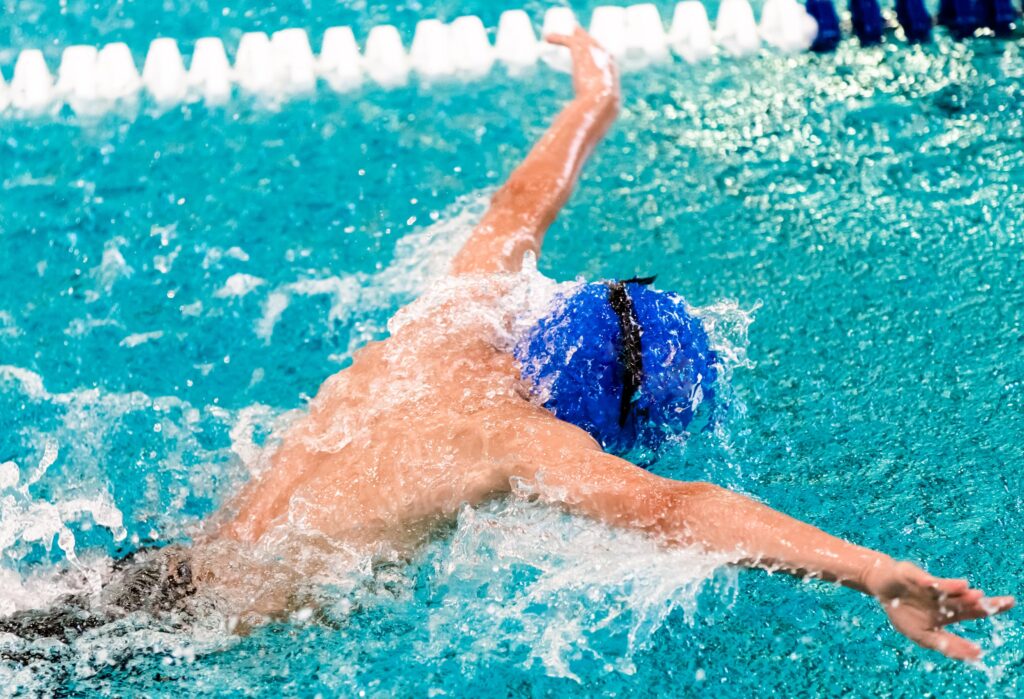
Training Techniques and Programs
When it comes to improving length pacing in longer distance swimming races, training techniques and programs play a crucial role. Here are a few things we can focus on to help us improve our pacing:
Sets and Intervals
One effective way to improve our pacing is to incorporate sets and intervals in our training. By doing so, we can gradually increase our endurance and work towards holding our goal pace for the duration of the race. For instance, we can start with shorter sets and gradually increase the distance and intensity over time.
Training Volume
Another important factor to consider is our training volume. We need to ensure that we are doing enough swimming each week to build our endurance and improve our pacing. Depending on our fitness level and goals, we may need to gradually increase our training volume over time.
Pace Work
Pace work is another essential aspect of training for longer distance swimming races. By focusing on our pace during training, we can improve our ability to maintain a consistent speed throughout the race. We can incorporate pace work in various ways, such as by doing timed sets or using a pace clock.
Training Programs
Finally, following a structured training program can help us improve our pacing and overall performance. A good training program should include a mix of different types of workouts, such as endurance training, speed work, and recovery sessions. It should also be tailored to our individual goals and fitness level.
Overall, improving our length pacing in longer distance swimming races requires a combination of different training techniques and programs. By focusing on sets and intervals, training volume, pace work, and following a structured training program, we can work towards achieving our goals and improving our performance in the water.
Techniques to Improve Stroke Efficiency
Efficiency is key when it comes to long-distance swimming. In order to improve our stroke efficiency, we can focus on a few key techniques that will help us swim faster and with less effort.
Stroke Length
One technique to improve stroke efficiency is to focus on our stroke length. By taking longer strokes, we can cover more distance with each stroke, which will help us conserve energy over the course of a long swim. To achieve longer strokes, we can focus on reaching forward with each stroke and extending our arms fully before beginning our pull. We can also focus on keeping our bodies streamlined and reducing drag in the water.
Distance per Stroke
Another technique to improve stroke efficiency is to focus on increasing our distance per stroke. This means covering more distance with each stroke, which will help us swim faster and with less effort. To improve our distance per stroke, we can focus on our technique and make sure we are using our bodies efficiently. This includes using our core muscles to rotate our bodies and generate more propulsion, as well as using our legs to help propel us through the water.
Energy Efficiency
Energy efficiency is also important when it comes to long-distance swimming. By conserving energy, we can swim faster and for longer periods of time. To improve our energy efficiency, we can focus on our technique and make sure we are using our bodies efficiently. This includes reducing drag in the water, taking longer strokes, and using our core muscles to generate more propulsion.
Strokes
The type of stroke we use can also affect our stroke efficiency. The freestyle stroke is the most energy-efficient and fastest stroke to use over long distances. However, we can also use other strokes such as the breaststroke or butterfly stroke, depending on our preferences and abilities. It’s important to choose a stroke that we are comfortable with and that allows us to swim efficiently over long distances.
In conclusion, there are several techniques we can use to improve our stroke efficiency in long-distance swimming. By focusing on stroke length, distance per stroke, energy efficiency, and stroke type, we can swim faster and with less effort, allowing us to cover longer distances and achieve our goals in the water.
Understanding and Managing Fatigue
Fatigue is a common issue that swimmers face during longer distance races. It can be caused by a variety of factors, including physical exertion, mental stress, and lack of sleep. In order to improve our length pacing, it is important to understand and manage fatigue.
Rest is a crucial component of managing fatigue. It is important to get enough sleep before a race, as well as taking breaks during training sessions. When we are tired, our bodies are not able to perform at their best. By taking the time to rest and recover, we can ensure that we are able to perform at our peak during races.
Recovery is also important when it comes to managing fatigue. After a training session or race, it is important to give our bodies time to recover. This can include stretching, foam rolling, and other forms of active recovery. By taking the time to recover properly, we can reduce the risk of injury and improve our overall performance.
In addition to rest and recovery, pacing can also help manage fatigue during longer distance races. By breaking the race down into smaller segments and pacing ourselves accordingly, we can conserve our energy and avoid burning out too quickly. This can involve using a combination of different strokes, adjusting our breathing, and maintaining a steady pace.
Overall, understanding and managing fatigue is an important part of improving our length pacing in longer distance swimming races. By taking the time to rest, recover, and pace ourselves properly, we can ensure that we are able to perform at our best and achieve our goals.
Breathing Patterns and Their Impact
Breathing is a crucial aspect of swimming, especially in long-distance races. Proper breathing technique can help you conserve energy, maintain your pace, and stay relaxed throughout the race. Here are some breathing patterns to consider and their impact on your swimming performance:
- Rhythmic Breathing: This is the most common breathing pattern used by swimmers. It involves taking a breath every two or three strokes. This pattern helps you maintain a steady rhythm and allows you to breathe bilaterally, which can improve your balance and posture in the water.
- Alternate Breathing: This pattern involves breathing to one side for a set number of strokes and then switching to the other side. This pattern can help you avoid muscle fatigue on one side and improve your ability to swim straight.
- Three-Stroke Breathing: This pattern involves taking a breath every three strokes. This pattern can help you conserve energy and maintain your pace, especially during longer races.
- One-Sided Breathing: This pattern involves breathing to one side only. This pattern can be useful if you have a dominant side or if you are trying to correct a stroke imbalance. However, it can also lead to muscle fatigue and make it harder to swim straight.
It’s important to find a breathing pattern that works best for you and your swimming style. Experiment with different patterns during training to find the one that helps you swim most efficiently.
Remember to exhale underwater and inhale quickly when you turn your head to breathe. Longer exhalations can also help activate your vagus nerve and promote relaxation, which can be beneficial during long-distance races [1].
Overall, proper breathing technique can help you swim more efficiently and maintain your pace during long-distance races. Try different breathing patterns during training and find the one that works best for you.
[1] Longer Exhalations Are an Easy Way to Hack Your Vagus Nerve. Psychology Today. https://www.psychologytoday.com/us/blog/the-athletes-way/201905/longer-exhalations-are-easy-way-hack-your-vagus-nerve
Role of Equipment in Swimming
When it comes to long-distance swimming races, equipment can play a vital role in improving your performance. Here are some of the equipment that can help you improve your length pacing in longer distance swimming races:
Snorkel
Using a snorkel during training can help you improve your technique and breathing. A snorkel allows you to focus solely on your stroke technique without worrying about breathing. This can help you improve your overall swimming efficiency and reduce drag. It can also help you develop a more streamlined body position and improve your lung capacity.
However, it is important to note that snorkels should only be used during training and not during races. Using a snorkel during a race can result in disqualification.
Equipment
Swimming equipment such as fins, paddles, and pull buoys can also be beneficial for improving your length pacing in longer distance swimming races. Fins can help you improve your leg strength and technique, while paddles can help you improve your upper body strength and catch. Pull buoys can help you focus on your arm stroke and improve your body position.
It is important to note that while equipment can be beneficial, it should not be relied upon solely for improving your performance. Proper technique and training are still the most important factors in improving your length pacing in longer distance swimming races.
In conclusion, the right equipment can help you improve your length pacing in longer distance swimming races. Using a snorkel during training can help you improve your technique and breathing, while swimming equipment such as fins, paddles, and pull buoys can help you improve your overall swimming efficiency and technique. However, it is important to remember that equipment should not be relied upon solely for improving your performance, and proper technique and training are still the most important factors.
The Start, Turn, and Finish
When it comes to longer distance swimming races, nailing the start, turn, and finish can make a big difference in improving your length pacing. Here are some tips to keep in mind:
The Start
A great start can help you get ahead of the competition right from the beginning. Here are some key things to keep in mind:
- Dive in with a streamlined body position, with your arms extended in front of you and your hands together.
- Keep your head down and your eyes focused on the bottom of the pool until you surface.
- Use a strong dolphin kick to propel yourself forward.
- Once you surface, transition into your freestyle stroke as quickly as possible.
The Turn
A good turn can help you maintain your momentum and conserve energy. Here are some tips to keep in mind:
- Approach the wall at a consistent speed, with your head down and your arms extended in front of you.
- As you get closer to the wall, initiate your flip turn by tucking your chin to your chest and bringing your knees up to your chest.
- Use the momentum of your flip to push off the wall with your feet and transition into your underwater dolphin kick.
- As you surface, transition into your freestyle stroke as quickly as possible.
The Finish
A strong finish can help you maintain your speed and finish the race strong. Here are some tips to keep in mind:
- As you approach the wall, increase your tempo and stroke rate to build momentum.
- As you get closer to the wall, transition into your sprinting technique by increasing your turnover rate and using a more aggressive kick.
- As you touch the wall, reach forward with your arms and stretch your body out as much as possible.
- Use your legs to push off the wall and transition into your freestyle stroke as quickly as possible.
By nailing the start, turn, and finish, you can improve your length pacing in longer distance swimming races and give yourself the best chance to succeed.
Specific Challenges in Different Swimming Events
When it comes to improving length pacing in longer distance swimming races, it’s important to consider the specific challenges that come with different swimming events. Here are some of the challenges that swimmers may face in various events:
Freestyle Events
In freestyle events, swimmers need to maintain a consistent pace throughout the race. This can be challenging, as fatigue can set in quickly, especially in longer distance events. Additionally, swimmers need to be able to adjust their pace based on their position in the lane and the position of their competitors.
Open Water Events
Open water events present a unique set of challenges for swimmers. In addition to maintaining a consistent pace, swimmers need to navigate through open water and deal with changing water conditions. This can include waves, currents, and wind, which can all impact a swimmer’s pace and energy levels.
Open Water Championships
Open water championships, such as the FINA World Championships, can be especially challenging due to the high level of competition. Swimmers need to be able to maintain a fast pace throughout the race while also strategizing to stay ahead of their competitors.
NCAA/National Championship
In NCAA and national championship events, swimmers are often competing at a high level against other top athletes. Swimmers need to be able to maintain a consistent pace while also adjusting to the pace of their competitors. Additionally, the pressure of competing at a high level can impact a swimmer’s mental and physical performance.
Olympic Distance Triathlon
In Olympic distance triathlons, swimmers need to maintain a consistent pace while also conserving energy for the biking and running portions of the race. This can be challenging, as swimmers need to balance their energy levels with their desire to finish the swim portion of the race as quickly as possible.
USAT Nationals
At USAT Nationals, swimmers are competing against other top triathletes in the country. Swimmers need to be able to maintain a consistent pace while also adjusting to the pace of their competitors. Additionally, the pressure of competing at a high level can impact a swimmer’s mental and physical performance.
By understanding the specific challenges that come with different swimming events, swimmers can better prepare themselves to improve their length pacing in longer distance races.
Role of Coaches and Personal Trainers
As masters swimmers, we understand the importance of having a coach or personal trainer to guide us in our training. A head coach, such as Terry Heggy of Saddlebrook Masters in Arizona, can provide us with a structured training plan that is tailored to our individual needs and goals. A USMS-certified Level 4 Masters Coach like Terry Heggy has the knowledge and experience to help us improve our technique, endurance, and speed in long-distance swimming races.
In addition to a head coach, a personal trainer who is NASM-certified can also be a valuable asset to our training. A personal trainer can help us improve our overall fitness and strength, which can translate to better performance in the water. They can also help us prevent injuries and ensure that we are performing exercises correctly.
Working with a coach or personal trainer can also provide us with accountability and motivation. Knowing that we have someone to report to and who is invested in our success can help us stay on track with our training and push ourselves to improve.
Overall, having a coach or personal trainer can be a valuable asset in improving our pacing and performance in longer distance swimming races. By providing us with a structured training plan, improving our technique and overall fitness, and providing us with accountability and motivation, coaches and personal trainers can help us reach our full potential in the water.
Understanding Swimming Metrics
Swimming metrics are an essential tool to help us understand our performance in the pool. By tracking and analyzing various metrics, we can improve our technique, endurance, and speed. Here are some of the most important swimming metrics to consider when trying to improve your length pacing in longer distance swimming races:
Speed
Speed is one of the most critical metrics in swimming. It is the measure of how fast we are swimming and is usually expressed in terms of yards or meters per second. To improve your length pacing, you need to work on increasing your speed without sacrificing your technique or endurance.
Laps
Laps refer to the number of times you complete a full length of the pool. Keeping track of your laps is essential when trying to improve your pacing for longer distance swimming races. By tracking your laps, you can set goals for yourself and see your progress over time.
Split Times
Split times are the time it takes to complete a certain distance. For example, if you are swimming a 1000-meter race, you might want to track your split times for each 100 meters. This will help you pace yourself and ensure that you are not going too fast or too slow.
Stroke Rate
Stroke rate is the number of strokes you take per minute. It is an essential metric to track when trying to improve your pacing. By increasing your stroke rate, you can swim faster without sacrificing your technique or endurance.
Heart Rate
Heart rate is the number of times your heart beats per minute. Tracking your heart rate can help you understand how hard your body is working during a swim. By monitoring your heart rate, you can adjust your pace to ensure that you are not overexerting yourself.
Energy Consumption
Energy consumption is the amount of energy your body uses during a swim. It is an essential metric to track when trying to improve your pacing. By monitoring your energy consumption, you can adjust your pace to ensure that you are not using too much energy too quickly.
Two-Beat Kick
The two-beat kick is a swimming technique that involves kicking twice for every stroke. It is an efficient way to swim and can help you conserve energy during longer distance races. By mastering the two-beat kick, you can improve your pacing and swim faster for longer distances.
In conclusion, understanding swimming metrics is essential when trying to improve your length pacing in longer distance swimming races. By tracking and analyzing various metrics, you can adjust your pace and technique to ensure that you are swimming efficiently and effectively.
Case Studies of Successful Swimmers
When it comes to improving our length pacing in longer distance swimming races, it can be helpful to look at successful swimmers who have already achieved this feat. By studying their techniques and training methods, we can gain valuable insights that may help us improve our own performance.
One example of a successful swimmer is Katie Ledecky, who holds multiple world records in long distance events. Ledecky is known for her ability to maintain a consistent pace throughout her races, which allows her to finish strong and often outpace her competitors. Her training regimen includes a mix of high-intensity interval training and longer, steady-state swims, which helps her build both speed and endurance.
Another notable swimmer is Michael Phelps, who is known for his dominance in sprint events. While Phelps may not be known for his long-distance prowess, his training methods can still provide valuable insights for improving our pacing. Phelps is known for his strict adherence to a training schedule, which includes a mix of swimming, weightlifting, and other exercises designed to build strength and endurance.
Finally, we can look to world championships for examples of successful pacing strategies. In these events, swimmers from around the world compete at the highest levels, and the winners are often those who are able to maintain a consistent pace throughout the race. By studying the techniques and strategies used by these top swimmers, we can gain valuable insights into how to improve our own pacing and performance.
Overall, there are many successful swimmers who can provide valuable insights into how to improve our length pacing in longer distance swimming races. By studying their techniques and training methods, we can gain a better understanding of what it takes to succeed at the highest levels of the sport.
Conclusion
In conclusion, pacing is a crucial aspect of long-distance swimming races. By building endurance through consistent training and monitoring your stroke rate, you can improve your ability to maintain a steady pace throughout the race. It is important to keep in mind the three factors of training volume, intensity, and frequency when building your endurance.
Additionally, incorporating interval training and focusing on technique can help improve your overall performance and pacing. By breaking up your swim into shorter intervals and focusing on proper technique, you can improve your efficiency in the water and maintain a consistent pace.
It is also important to remember the importance of mental preparation in pacing. Developing a positive attitude and visualization techniques can help you stay focused and maintain a steady pace throughout the race.
Overall, improving your length pacing in longer distance swimming races requires a combination of physical and mental training. By incorporating these techniques into your training regimen and staying focused on your goals, you can improve your pacing and performance in long-distance swimming races.
Frequently Asked Questions
What are some effective training techniques for improving long distance swimming pace?
To improve your long distance swimming pace, you need to build endurance. This means increasing your training volume gradually over time. You can also incorporate interval training, where you swim at a faster pace for a set distance or time, followed by a period of rest. This helps to improve both your speed and endurance.
What is the optimal breathing technique for long distance swimming?
The optimal breathing technique for long distance swimming is bilateral breathing, where you breathe every three strokes. This helps to balance your stroke and prevent muscle fatigue on one side of your body. It’s also important to exhale fully underwater and inhale quickly when you turn your head to breathe.
How can I increase my swimming distance without getting tired?
To increase your swimming distance without getting tired, you need to focus on building your endurance gradually over time. This means increasing your training volume and incorporating interval training into your workouts. You can also work on your technique to make your strokes more efficient, which will help you conserve energy during your swim.
What is a good swim pace chart for meters?
A good swim pace chart for meters will depend on your current fitness level and swimming ability. As a general rule, you should aim to swim at a steady pace that you can maintain for the duration of your race. You can use a pace clock or stopwatch to time your laps and adjust your pace as needed.
How do I teach proper pacing in swimming?
To teach proper pacing in swimming, you can use interval training and drills to help swimmers develop a sense of their own pace. You can also use visual aids, such as pace clocks or lap counters, to help swimmers monitor their progress and adjust their pace as needed.
What are the best swimming techniques for long distance races?
The best swimming techniques for long distance races are those that are efficient and conserve energy, such as the round arm freestyle stroke and two-beat kick. It’s also important to maintain a neutral head position and keep your body position strong and streamlined. Incorporating interval training and building endurance are also key to improving your long distance swimming performance.

